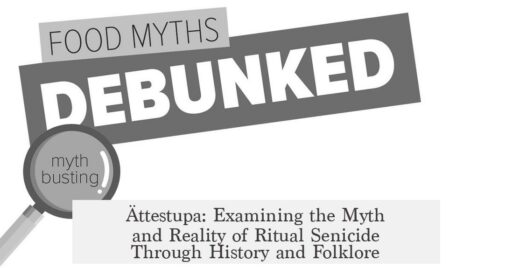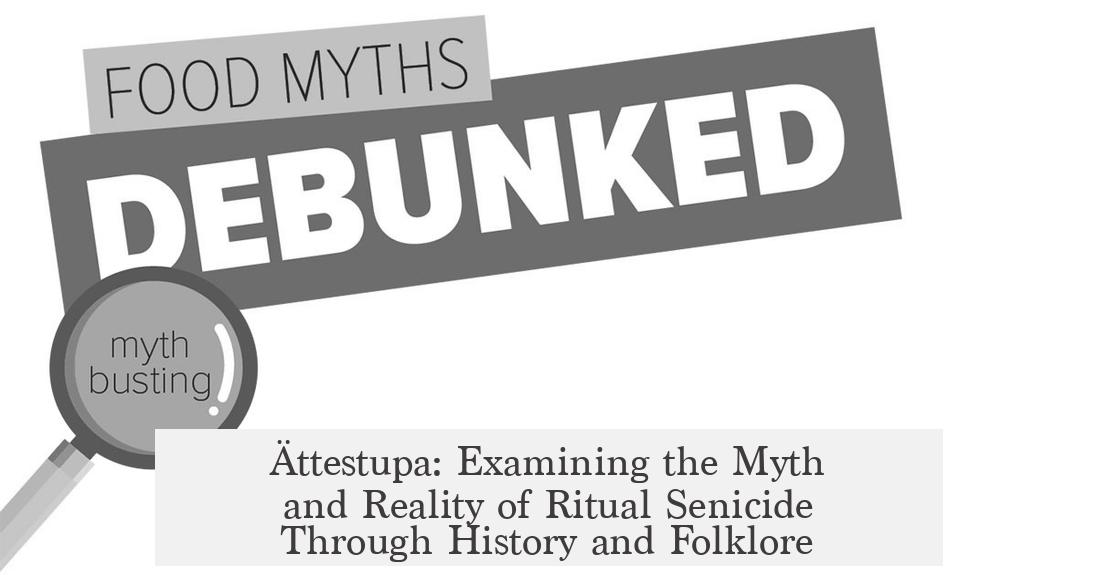Ättestupa (ritual senicide) is not a genuine historical ritual but a myth rooted in a misunderstood term and later folklore. The word itself, derived from Old Norse elements, simply names a type of cliff associated with old family members supposedly jumping to their deaths. This term was coined in the 17th century by Swedish antiquarians and does not appear in authentic Old Norse texts before then.
The term ättestupa breaks down to “ätt” meaning family or clan and “stupa,” meaning a steep cliff or precipice. It originated in a 1664 translation of the medieval Icelandic Gautreks Saga, performed by Olof Verelius and Jonas Rugman. They created the term by calquing from the Old Norse “ætternisstapi,” which appears only once in this saga. There are no other mentions of the word or similar concepts in the broader corpus of Old Norse literature, medieval chronicles, or place names.
Gautreks Saga, composed in late 13th-century Iceland, belongs to the category of Legendary Sagas. These works focus on mythical, nonspecific Scandinavian pasts rather than actual history. It draws some incidental details like names of kings and locations from earlier, mostly fictional sources such as Ynglinga Saga. Modern historians consider these sagas entirely legendary and unreliable as factual accounts. Inside the saga, the ætternisstapi is a single cliff at a place called Gillingshamarr in Götaland, used as a site where the elderly supposedly ended their lives by jumping.
However, several issues undermine the historicity of this story:
- The place name Gillingshamarr is unattested outside the saga and is linguistically improbable as a genuine Götaland name. It combines Old West Norse terms not used in the Old East Norse dialect of the region.
- Modern scholars cannot identify such a mountain or cliff in Götaland or anywhere in Sweden.
- The saga itself treats the concept as obscure and specific, not as a known general practice across Scandinavia.
The idea that elderly relatives routinely committed ritualized suicide by cliff-jumping is unsupported by archaeological, textual, and folklore evidence outside this single literary source.
Verelius’s 17th-century work popularized the term and concept, and during the 19th century, Scandinavian folklore took up the trope enthusiastically. Various sheer cliffs across Sweden became labeled as ättestupa in local legends. Currently, roughly 16 places bear these names in Sweden. None of these designations predate Verelius’s work, indicating they are products of folklore influenced by antiquarian imagination, not historical sites of ritual senicide.
There is also no evidence of other forms of ritual senicide or elder sacrifice in Norse or Scandinavian history. The idea appears to be an invention from a misinterpretation of saga literature combined with later nationalistic or romantic folklore trends. Some historians and scholars have dismissed these stories completely for over a century.
| Aspect | Fact |
|---|---|
| Origin of term | Coined by Olof Verelius (1664), based on single saga mention |
| Use in Old Norse sources | Unique occurrence only in Gautreks Saga, no other attestations |
| Historical reliability | Legendary saga, no corroboration from history or archaeology |
| Named locations | Gillingshamarr is fictitious; ~16 places called ättestupa emerged later without historical basis |
| Practice | No evidence for ritual elderly cliff-jumping or senicide in Scandinavia |
In essence, the ättestupa represents a myth perpetuated through literature and folklore rather than an authentic historical or cultural practice in Scandinavian societies.
- The term ättestupa refers to a type of cliff, not a verified ritual of senicide.
- Its origin is a 17th-century scholarly invention based on a single legendary saga passage.
- The saga’s cliff location is not identifiable or linguistically feasible in historical Scandinavia.
- Later folklore spread the idea, naming several cliffs, but no original ancient use exists.
- No independent evidence supports ritual senicide among the elderly in Norse culture.
Ättestupa (Ritual Senicide): Myth, Folklore, or Just Plain Nonsense?
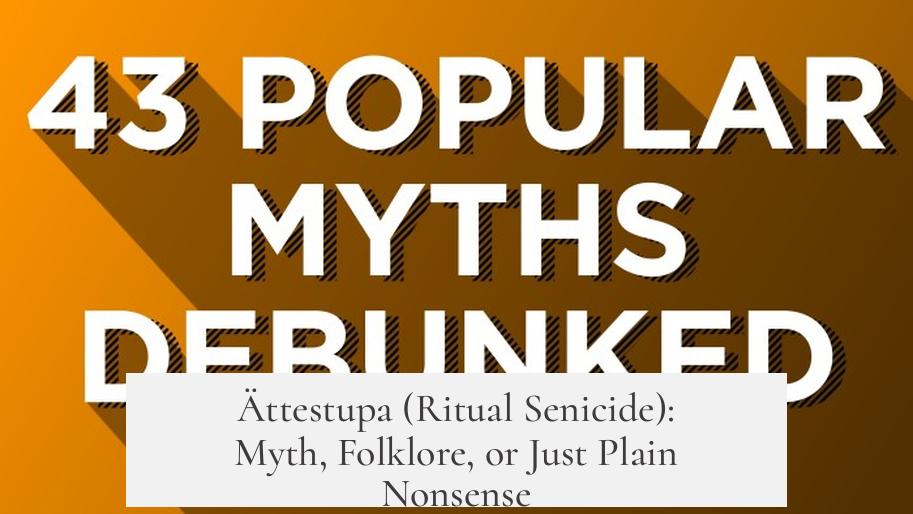
Is Ättestupa a real ancient ritual where elderly people were forced off cliffs to die, or is it more of a tall tale spun by historians and folklorists? Simply put: the Ättestupa is just thoroughly nonsense. Let’s unpack why this sensational idea doesn’t hold up to scrutiny.
First off, the word “ättestupa” itself is a modern invention—not some ancient term describing a widespread cultural practice. It literally means the kind of cliff (from Old Norse stup) where an elderly family member (ätt) supposedly jumped off. But the truth is, this term was coined in the 17th century by Swedish antiquarians who were translating an Icelandic saga.
The Origins of the Term: A 17th-Century Creation
Olof Verelius and Jonas Rugman introduced the Swedish word “ättestupa” in 1664 while translating the medieval Gautreks Saga, an Icelandic legendary saga from the late 13th century. This saga mentions a cliff called the ætternisstapi, supposedly a place where elders might have jumped. But—and this is a big but—the saga is mythical fiction, not history.
The term and its variants don’t appear anywhere else in Old Norse literature, place names, or historical records before Verelius’s translation. The idea that this was some ritual senicide practiced across Scandinavia? There’s no historical backing.
Gautreks Saga: Legendary, Not Historical
The saga itself is part of the Fornaldarsögur, legendary tales set in a hazy mythical past. Even the basic names and places in it—like King Gauti and Götaland—come from earlier Icelandic stories already considered fiction. Historians like Adolf Noreen dismissed Gautreks Saga over a century ago as lacking historical credibility.
The cliff known as the ætternisstapi appears as a very specific, singular location in the saga, not a general or common practice. It supposedly stood on a mountain called Gillingshamarr in Götaland.
What About This “Gillingshamarr” Mountain?
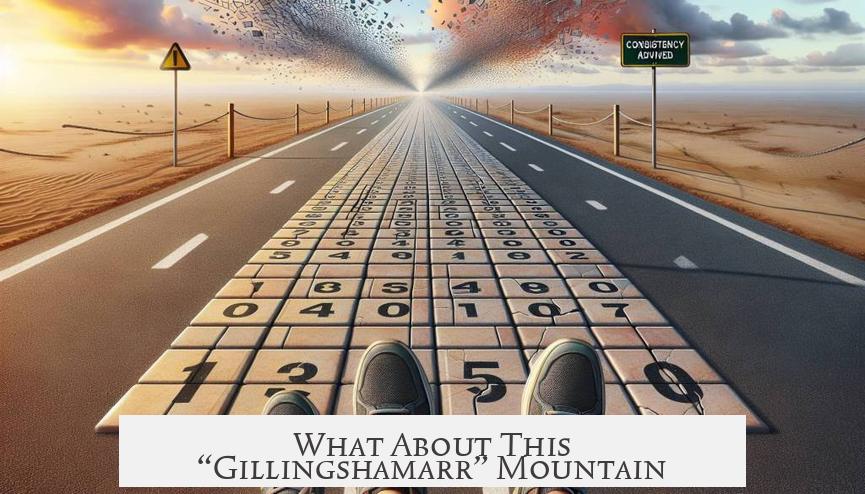
Here’s where things get even murkier. No evidence shows that such a mountain existed—no records, no place names, nothing. Linguistically, the name is odd too.
It’s derived from Old West Norse words: gil meaning “gully” or “ravine,” and hamarr meaning “steep mountain” or “sheer cliff.” The problem? The Old East Norse dialect spoken in Götaland didn’t use these terms similarly, if at all.
The name itself seems to be a 13th-century Icelandic invention, a literary creation without a real-world counterpart. It reflects the author’s poetic flair rather than geographic reality.
The Spread of the Ättestupa Legend
So who’s the culprit for turning this single fictional cliff and story into a “widespread ancient ritual”? That would be Olof Verelius, who popularized the term and inadvertently planted the idea that elders routinely jumped to their deaths on such cliffs.
Fast forward to the 19th century, a time when historians and local storytellers eagerly embraced romanticized notions of the past. Suddenly, many Scandinavian locales claimed to have their own “ättestupa” cliffs. In fact, Sweden now has at least 16 places named ättestupa or variations thereof.
But here’s the kicker: all these place names appeared after Verelius’s publication, making it clear that the “ättestupa” was a product of folklore born from historical misconceptions, not an actual historic practice.
What About Other Evidence?
None exists. No archeological, historical, or ethnographic detail supports ritual senicide via cliff throwing in Scandinavia—or anywhere else in documented history for that matter. No accounts or finds back up the idea that elders were sacrificed in this way.
Beyond the saga and later folklore, the whole legend stands unsupported.
Why Does the Ättestupa Myth Persist?
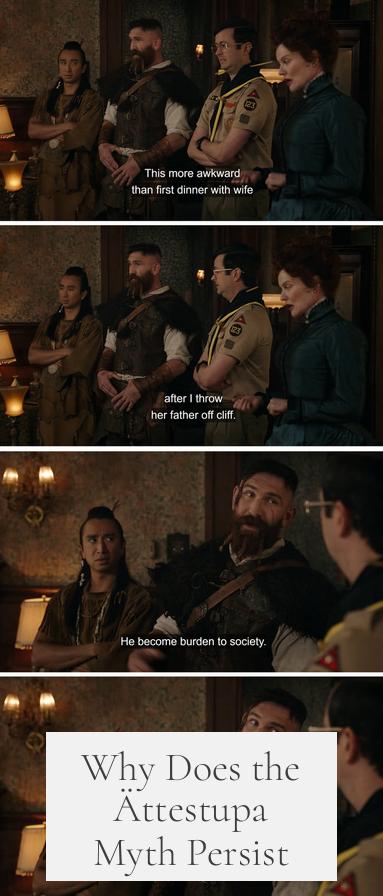
Humans love drama, mystery, and stories of harsh ancient customs. Add to that the 19th-century fascination with national identity and romanticized “pagan” pasts. The story of elders bravely leaping off cliffs to ease family burdens fits beautifully into those narratives.
The Ättestupa also offers a juicy topic for writers, historians, and travel guides eager to share “exotic” cultural tidbits, despite lacking solid proof.
What Can We Learn?
This tale reminds us to approach history with a critical eye and not accept stories just because they appear in “ancient” literature. Just because a word exists, or a story has been told for centuries, doesn’t make it fact.
Ättestupa is a lesson in how legends form, how ideas can spread, and why clear historical research is essential. Romantic ideas about the past may be entertaining, but they don’t replace the truth.
So, Should You Believe in the Ättestupa Ritual?
In short, no. It’s a fascinating story, yes—symbolic, perhaps, in literature. But any serious historian or archaeology enthusiast knows the “ättestupa” as ritual senicide simply isn’t real.
Next time someone mentions this cliff-jumping elder ritual, you’ll be ready with the real background. Who knows? Maybe you can share the saga of how a 17th-century scholar’s translation created a myth that lasted centuries!
Summary Table: Key Takeaways on Ättestupa
| Topic | Details |
|---|---|
| Meaning of Ättestupa | Cliff (stup) of family/dynasty (ätt) where elders supposedly jumped; term coined in 1664 |
| Origin | Swedish antiquarian Olof Verelius & Icelandic Jonas Rugman’s translation of Gautreks Saga |
| Historical Basis | No credible historical evidence; Gautreks Saga is legendary fiction, not history |
| Geographic Claim | Single mythical cliff on non-existent “Gillingshamarr” mountain in Götaland |
| Folklore Spread | 19th-century local tales and place names created after Verelius’s publication |
| Actual Practice? | No archeological or historical support for ritual senicide via Ăttestupa |
Have you ever encountered legends similar to Ättestupa in your culture? What’s your take on stories that blend myth with supposed archaeology? Share your thoughts below!
